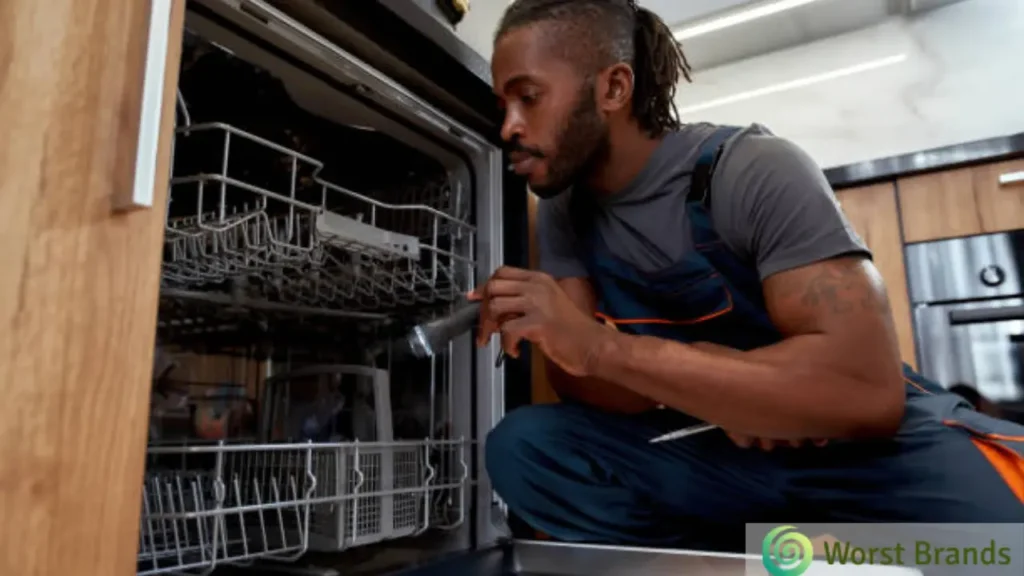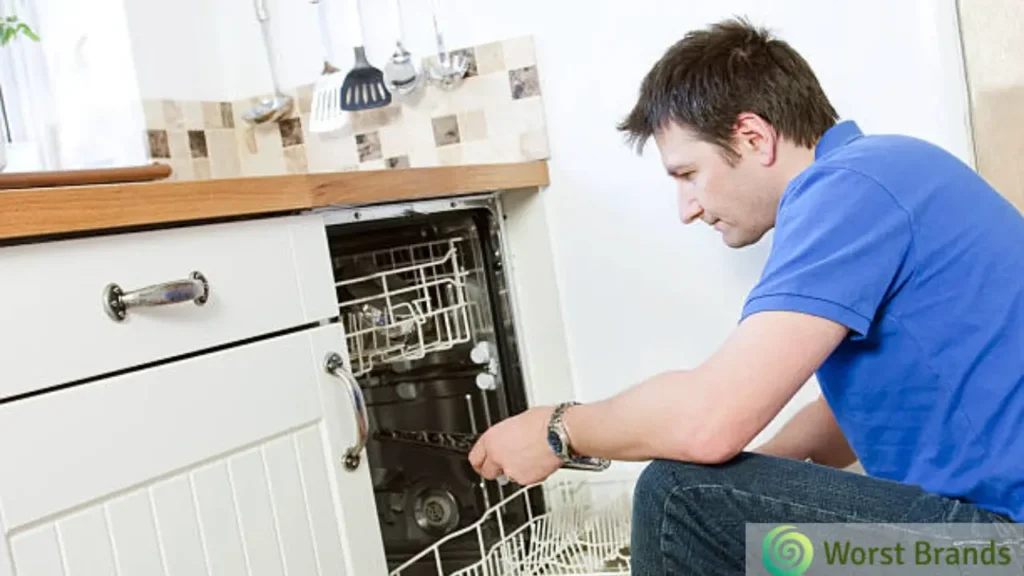Whirlpool dishwashers are notorious for not drying dishes completely. This is a real inconvenience if you are trying to do a big cleaning job and use the dishwasher to help you out.
Malfunctioning vent doors, faulty heating components, and clogged filters are the most typical causes of a Whirlpool dishwasher not drying dishes. If you know how to troubleshoot these issues, you can diagnose them all.

To assist you in resolving these Whirlpool dishwasher issues, we have created a list of the most prevalent reasons. To find out the real reason, keep reading to the end.
Table of Contents
How to Fix Whirlpool Dishwasher Not Drying?
Our team of experts has developed a shortlist of possible reasons why your dishwasher is not drying and how you can fix each of these individually.
Before going into the detail solution, take a quick look at the following table, which provides easy solutions to common drying problems of dishwashers.
| Problem | Quick Fix |
|---|---|
| Improper Loading | Follow the manual for loading instructions; ensure proper placement. |
| Lack of Rinse Aid | Use “Rinse Aid” to improve drying and reduce spots. |
| Faulty Vent Door | Replace the deteriorated gasket; ensure the vent door moves freely. |
| Damaged Heating Elements | Inspect wires for corrosion; replace heating elements if needed. |
| Vent Fan Motor Failure | Check motor and blades for damage; replace if necessary. |
| Clogged Filters | Clean filters with water (not too hot); use a toothbrush if needed. |
1. Dishes Are Not Loaded Properly:
This is the most typical cause of a Whirlpool dishwasher failing to dry all of the dishes.
Many homeowners simply put dirty dishes into the machine without loading them with soap or using the proper amount of rinse agent.
This causes the automatic washing cycle to operate much longer than necessary and does not allow the heat elements to do their job.
You should check to see if your owner’s manual has any special instructions about loading the dishwasher. If it doesn’t, here are the general instructions:
- Put the stack of dishes into the rack. Moreover, each individual dish should be placed on top of the one next to it.
- Next, pour water into the bottom of the machine until the water level is just below the line where the dishes will be placed.
- Finally, add some dishwashing liquid or detergent. Ensure it is in a plastic or metal container with a pouring spout.
2. Use a Rinse Aid:
Whirlpool recommends using a “Rinse Aid” product when you wash dishes by hand or put them into a conventional dishwasher.
This product is especially useful if you have glass or ceramic plates or bowls in your normal load. It helps to dissolve food particles that can interfere with the cleaning process.
3. Faulty Vent Door:
The vent door on your dishwasher must open and close freely for the heat elements to get adequate access to the inside of the machine.
If it gets stuck in any way, it will prevent the necessary air circulation and cause dampness and mildew to grow inside the machine. This is very common in older home appliances and may be due to various causes.
To see if this is the case:
- Disconnect the power supply to your dishwasher.
- Then, remove the top panel.
- Look at the rubber gasket that fits around the perimeter of the vent door opening.
- If it has deteriorated, it will allow water to enter the machine and create mildew.
- You should replace it immediately.
4. Faulty Heating Elements:
As mentioned earlier, the heating elements transfer heat energy from the outside to the inside of the machine.
If they become weak or damaged in any way, it will cause the cycle time to increase and the dishes not to be completely dried.
To check if this is the case:
- Remove the top panel after turning off the power.
- Look at the two black wires from the plastic box that holds the heating elements.
- If they are corroded or have a brownish tint to them, it is a sure sign that they need to be replaced.
However, if you are unsure how to replace it, I recommend hiring a professional to do this job for you.

5. Vent Fan Motor Failure:
This is by far the least common problem we encounter when troubleshooting a Whirlpool dishwasher.
However, if this is the case, it will cause water to enter the machine through the vent door and cause mildew and rot.
If this is not fixed immediately, it can cause much more serious problems like mold and mildew growth in the insulation and walls of the machine and even structural damage.
To check this:
- Turn off the power at the breaker panel.
- Remove the two screws that hold the vent cover on the dishwasher.
- Take the vent cover off and look at the motor and blades inside.
- If they are black or burned out, replace them immediately.
6. Clogged Filters:

Dishwasher filters are responsible for catching particles that may have been left behind after cleaning the dishes. They are located inside the machine, either under the bottom of the rack or inside the bottom of the door.
If they become clogged with food particles or other debris, it will greatly reduce the efficiency of the machine and also cause a Whirlpool dishwasher draining problem.
To check if your filter is clogged:
- Remove the top rack and look inside the bottom of the door.
- You should be able to see several filter cartridges, some of which are filled with dirt and debris while others are clean.
- If the dirty ones get clogged faster than the clean ones, your filter is clogged.
- You can unclog it by running a sink full of water through it or by removing one of the cartridges and running it under hot water.
- Be careful, though, because hot water can cause the plastic in the filter to melt, so make sure the water is not too hot.
- You can use a toothbrush to clean out any stubborn particles.
Final Words:
Hopefully, after reading this article, you will have a much better idea of the most common dishwasher problems and the most likely cause of each problem.
As you can see, most problems that can cause a Whirlpool dishwasher to malfunction are simple and easy to correct.
However, knowing the symptoms before you take your machine to a repair shop is always a good idea.
That way, you can quickly identify the problem and have your machine back up and running quickly.
Again, if you are unsure how to perform any of the repairs yourself, I highly recommend hiring a professional to do it for you. It is not worth risking ruining your investment.

Steven Settles is an ISCET-certified master in appliance repair. He has aced the National Appliance Service Technician Certification Exam, showcasing his exceptional diagnostic and repair skills. With an in-depth understanding of the latest repair technologies and a keen eye on evolving industry standards, Steven is a go-to expert for any appliance issue.